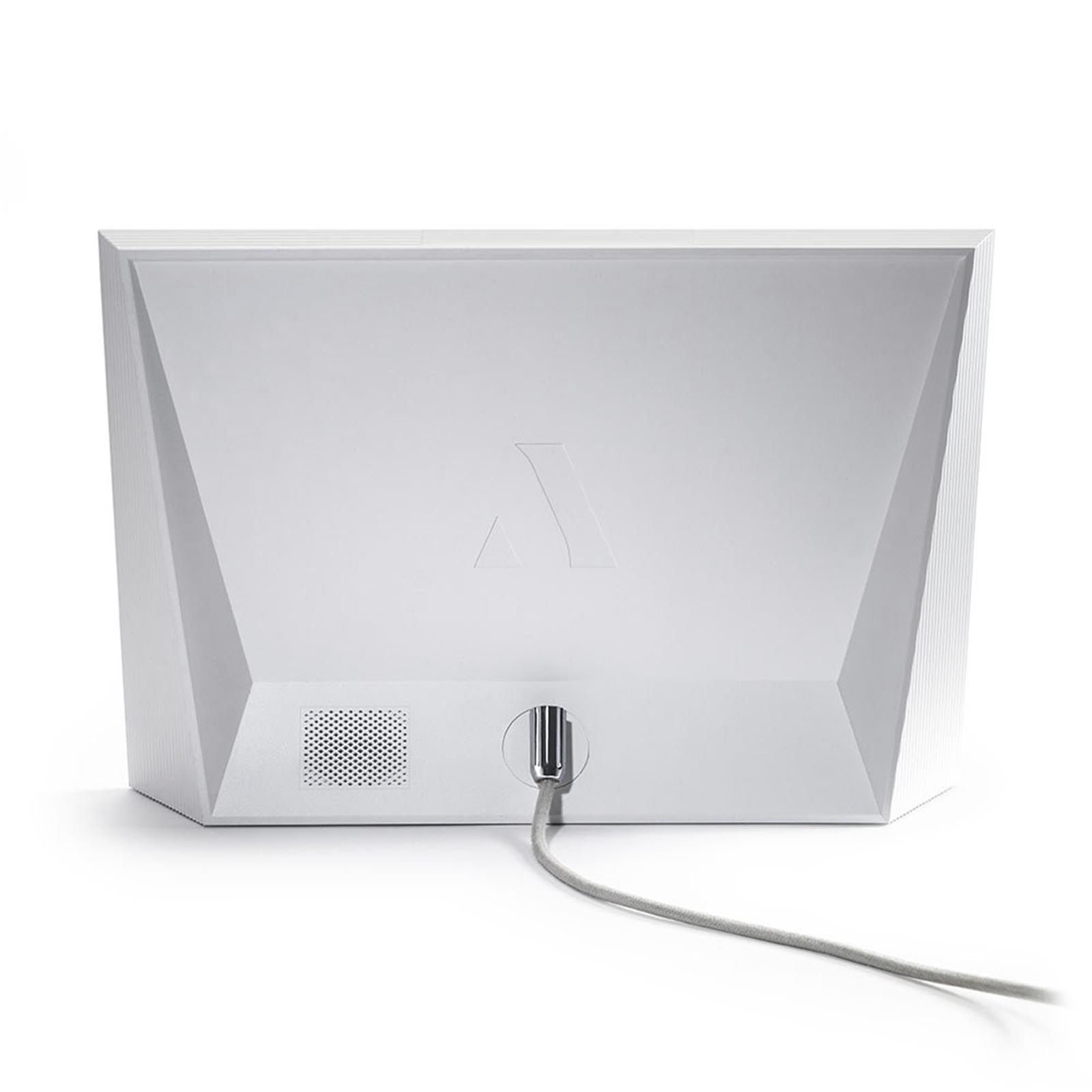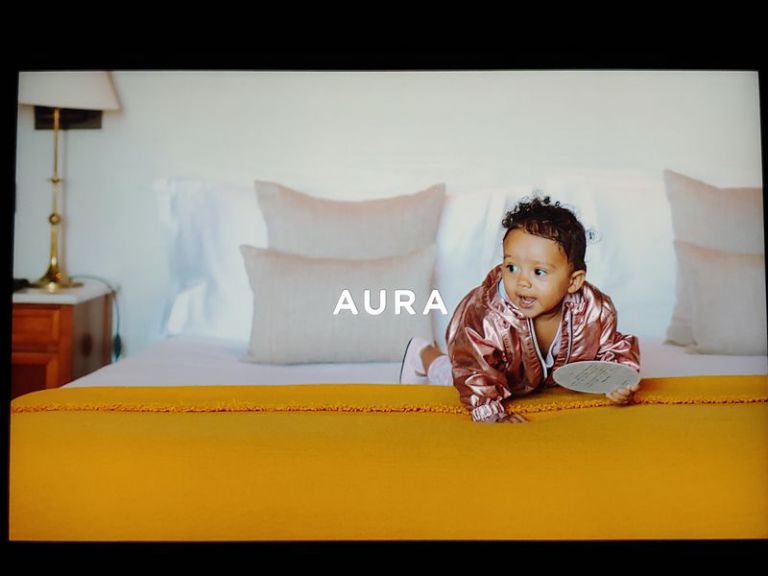
You can also schedule when to power the frame on and off, if you don’t want to rely on its auto-sleep function. That’s when they were taken, not when they were added. Your two slideshow options are how long to show each photo for, from 15 seconds to 24 hours, and whether to shuffle images or display them in chronological order. You just upload images to your Aura, and can then remove them from the “slideshow” – or get rid of them entirely further down the line. The phone app is quite straightforward, too. Flick left and right to switch images, hold a finger down to either remove a photo or power off the Aura Carver. You can tell where it is because it’s super-smooth, while the surrounding plastic is roughened. On the frame itself, your only control is through a little touch sensitive strip on the top. It’s common for photo frames to have their own menu system, but this one keeps things stripped back. You set up the Carver using the Aura app, which is where you control pretty much every element of the photo frame. This is used when playing videos, with clips of up to 30 seconds supported. There’s just the power connector on the back, and a speaker. You can’t slot in a memory card, or attach a USB cable to your phone to transfer images. Aura Carver: usabilityĪura aims to make the Carver simple to use. Aside from this, viewing angles are excellent, and colors look vibrant but natural. Blacks can look a little blue at some extreme angles, thanks to the style of screen panel used. And you can’t manually control brightness, even if you want to.Īside from the relatively low resolution, there’s only one other issue to speak of. You won’t often see this kind of brightness, though, because the Carver automatically adjusts its brightness to match ambient conditions. Where most photo frames we’ve tested will reach around 220-250 nits, the Carver can hit 445 nits, like a decent tablet at maximum brightness. The Aura Carver’s screen is also impressively bright. Of course, the odd thing here is that picture frames are typically topped with glass, or plastic that looks like glass, so this move arguably makes it seem less like a a traditional picture frame.
#AURA FRAME CARVER LUXE FULL#
This display doesn’t have a full matte finish, but it does soften refections in a way that makes photos look more like printed pictures.

We suggest looking at an Aura Mason instead. But if you’re looking to show off pics of people and places shot in portrait, you don’t want a Carver. This is fine if you’re planning to mainly display landscape photos. However, this style also means the Carver can only sit one way: landscape. Instead, it stands by itself on its thicker base, meaning the footprint is usefully small. It also relies on that thickness to prop itself up: there’s no pull-out or attachable stand. This border is plastic, and feels like it, but the Aura Carver does have a reassuring heft which isn’t found on most cheaper photo frames. Rather than aiming to look like a classic picture frame, it adopts a distinctive style with a heavily embossed border. The Aura Carver is one of the company’s lower-cost options, but it features a similar style to what we’ve seen in other models. Overall, the Aura Carver ranks highly among our pick of the best digital photo frames. But if you find the idea of a straightforward and stylish photo frame appealing, there’s plenty to like. There are also very few settings which can be manually adjusted. It can only be positioned in landscape orientation, which some will find restrictive.


There are certain quirks to how the Aura Carver operates.


 0 kommentar(er)
0 kommentar(er)
